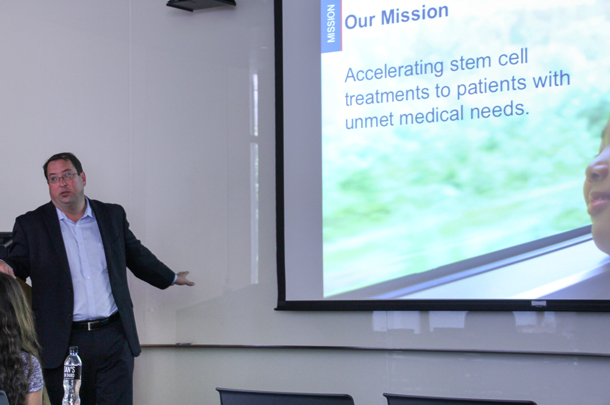This summer, leaders from the California Institute for Regenerative Medicine (CIRM) visited Los Angeles, San Diego and San Francisco to consult with citizens and patient advocates in each city. These citizens are among the voters who created CIRM to dispense $3 billion to fund stem cell research in California, and they include patients and advocates who will benefit when the research leads to new treatments for diseases.
At the meetings, one of which took place at the Eli and Edythe Broad Center for Regenerative Medicine at USC, CIRM President Randy Mills discussed CIRM’s Strategic Plan. He underscored the agency’s mission of accelerating the development of stem cell therapies to patients with unmet medical needs. He also described how CIRM is making rapid progress in achieving this mission with 12 projects now in clinical trials and close to $1 billion left in the bank.
Mills also discussed “CIRM 2.0” and the development of research funding process that is easier, faster and more responsive to the needs of the scientists and companies developing new therapies.
Some of the patient advocates asked whether CIRM ever considered concentrating its remaining resources on a few diseases, such as the 10 largest killers of Americans.
Mills responded: “This is not a popularity contest; you can’t judge need by numbers, deciding the worth of something by how many people have it. We are disease agnostic. What we do is find the best science and fund it.”
In addition to funding the best science, CIRM seeks to attract greater investment from big pharmaceutical companies and venture capitalists with the goal of moving promising projects through clinical trials to patients. The agency is also focused on getting the Food and Drug Administration (FDA) to approve therapies for clinical trials.
Many patient advocates expressed frustration at the FDA’s slow pace.
Mills said that the FDA is caught between a rock and a hard place — criticized if it approves too slowly and chastised if it approves too quickly, green lighting a therapy that later proves to have problems. But he agreed that changes are needed: “The regulatory framework works well for things like drugs and small molecules that can be taken in pills, but it doesn’t work well for cellular therapies like stem cells. It needs to do better at that.”
One advocate suggested a boot camp for researchers, drilling them in the skills they’ll need to get FDA approval. Others suggested applying political pressure from patient advocacy groups to push for change.
As always, there are no easy answers, but the meetings raised worthwhile questions.
As Chris Stiehl, a patient advocate for Type 1 diabetes, said in San Diego: “Let the patient be in the room, let them be part of the conversation about these therapies. They are the ones in need, so let them help make decisions about them right from the start, not at the end.”
— Kevin McCormack


